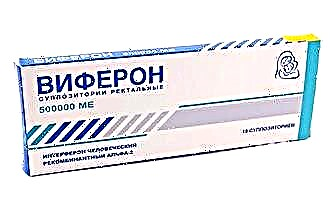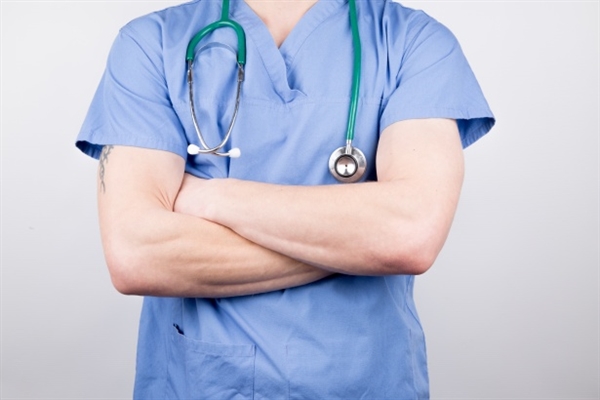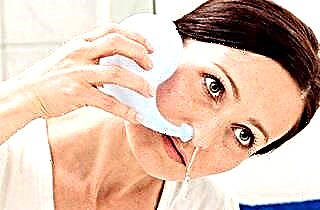The onset of cough in respiratory diseases is a protective function of the body. With the help of it, the airways are freed from the accumulated inflammatory product.
The cough does not always go away with the end of the underlying disease. Sometimes the symptom may persist and continue to torment the patient. This is the residual cough after viral infections.
Why arises
It is easy enough to get a respiratory infection. The virus is transmitted by airborne droplets. The source of infection is sick people who, when talking, coughing, sneezing, release the pathogen into the external environment. The cause of the cough symptom is rhinoviruses, coronaviruses and metapneviruses. The bacterial microflora also contributes to its development.
 Direct contact with a sick person is not necessary. It is enough to be present for a short time in an infected room. Therefore, during the period of an epidemic, it is worthwhile to be outdoors more often and longer. In places of significant congestion (metro, public transport, educational and other institutions), wear a protective cotton-gauze bandage.
Direct contact with a sick person is not necessary. It is enough to be present for a short time in an infected room. Therefore, during the period of an epidemic, it is worthwhile to be outdoors more often and longer. In places of significant congestion (metro, public transport, educational and other institutions), wear a protective cotton-gauze bandage.
With a weak resistance of the body and reduced immunity, sometimes complications develop on the 4th-5th day of the disease: otitis media, tonsillitis, sinusitis, tracheitis, bronchitis, pneumonia. In more severe cases, damage to the nervous and cardiovascular systems is possible.
A viral cough at this point is already becoming quite dangerous and unpleasant. Bronchospasm persists after recovery and the disappearance of other characteristic symptoms. Frequent coughing is noted. This is due to the spread of infection to the lower respiratory tract.
To prevent the progression of the disease, the inflammatory process should be stopped at the initial stage of its development. It is necessary to start on time the treatment of the throat (tonsillitis) and nasopharynx (rhinitis, rhinotracheitis) - places where a viral respiratory infection penetrates during infection.
How does post-viral cough manifest?
The onset of dry cough is preceded by chills, a rise in body temperature (38-39 ° C), headache, general weakness, sweating, sore throat. Subsequently, an unproductive cough develops with insignificant sputum production. The cough continues for 4-6 weeks.
In the absence of adequate treatment, the respiratory tract is deeply affected with the development of dysfunction of the ciliated epithelium, the clearance of the airway lumen from the irritant (accumulated excessive secretion, sputum) slows down.
Varieties
Characteristics of bronchospasm by the degree of secretion of bronchial secretions:
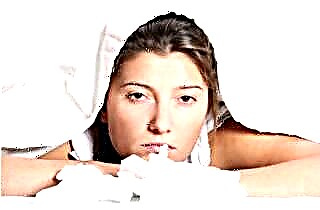 Dry unproductive - occurs 4-5 days after infection. Its transition to a wet form indicates an improvement in the patient's condition.
Dry unproductive - occurs 4-5 days after infection. Its transition to a wet form indicates an improvement in the patient's condition.- Unproductive - appears on the 7-10th day of illness. It can last a month or more.
- Wet (wet) - when sputum is separated, it is considered a sign of recovery and disappears in 2-3 weeks.
A cough, depending on the course, is:
- acute - the first few days;
- subacute - 2-3 weeks;
- chronic - 3-6 weeks;
- protracted (long-term) - several months.
According to the form of manifestation, residual cough is distinguished:
- barking - develops with inflammation of the larynx and pharynx, croup, parainfluenza;
- paroxysmal - occurs after whooping cough (due to the latent clinical course of the disease, it is rarely diagnosed in a timely manner in adults);
- deep (chest) - noted at the stage of resolving pneumonia (pneumonia);
- night - asthmatic.
Initially, a dry cough often changes to a wet cough with the release of purulent-mucous sputum (a sign of the presence of bacterial microflora). In some cases, there is chest pain, shortness of breath.
Important! You should be especially careful not to miss the onset of the development of pneumonia.
If there is even a slight, without fever, but prolonged residual cough after ARVI in an adult, it is necessary to consult a doctor for examination and listening to the lungs. Based on the results of the examination, the doctor sometimes prescribes an additional examination - X-ray diagnostics. It allows you to prevent the development of complications - croupous pneumonia, lung abscess.
Treatment
How is residual cough treated? With a mild course of the disease, it is enough to use immuno-strengthening and symptomatic agents: analgesics,  antipyretic, vasoconstrictor, antiviral and vitamin agents. Treatment of the cough is not necessary. It goes away on its own as it recovers.
antipyretic, vasoconstrictor, antiviral and vitamin agents. Treatment of the cough is not necessary. It goes away on its own as it recovers.
A severe cough that appears after ARVI in an adult is rather difficult to treat. Elimination of the symptom is possible with the combined use of several groups of drugs: immunoprotectors, antihistamines, anti-inflammatory and antimicrobial agents.
The use of antiviral drugs ("Groprinosin" and analogues) is advisable in the first 48 hours of illness. Next, the immune system begins to develop its own immune bodies. In this and subsequent period, it is worth using nonspecific immunoglobulins (bacterial lysates), which help to strengthen the immune system - "Broncho-Munal", "Broncho-Vaxom", "Wobenzym", "Arbidol", "Imunofan" and others.
Cough after a cold is successfully treated with the non-steroidal drug "Erespal" ("Erispirus"), which has anti-inflammatory and bronchodilator effects.
Residual cough after ARVI is eliminated with Rengalin. It allows you to translate a frequent dry cough that occurs after acute respiratory infections into a lighter productive one. In this case, there is no increase in the formation of bronchial secretions. The duration of therapy is 7-10 days.
Acute dry hacking cough with laryngotracheitis (inflammation of the larynx and trachea) is reduced by using "Sinekod". The course of treatment is 7-10 days. The decision to extend therapy is made by the doctor.
Getting rid of residual bronchospasm is facilitated by the use of means and methods of traditional medicine... Traditional medicines reduce edema, have  expectorant, antispasmodic, antimicrobial, mucolytic action.
expectorant, antispasmodic, antimicrobial, mucolytic action.
Folk remedies:
- inhalation;
- therapeutic massage;
- warming compresses;
- health-improving gymnastics and physical education.
Inhalations with a string, wild rosemary, plantain, coltsfoot, yarrow have a pronounced effect in the treatment of residual cough. Essential oils of sage, calamus, rosemary, pine or fir are added to the solutions. In the absence of a nebulizer, they practice inhaling a pair of medicinal herbs from a small container. After the physiotherapy, you should stay indoors for 10-15 minutes, you should not immediately go outside.
Badger fat is used for rubbing, massage is usually performed before bedtime. Warming compresses are also applied to the chest and back, avoiding the heart area.
Physical therapy with good general health has a positive effect and promotes the discharge of sputum. One of the most popular exercises is push-ups from a horizontal surface on your knees or spreading your arms to the sides with a small load while lying on your back. Thanks to physical education, active ventilation of the lungs occurs and coughing is stimulated.
Active walks improve the body, especially in the morning near a park, a reservoir or in a grove. An ideal place for rehabilitation after respiratory diseases will be a young coniferous forest. In it, needles or young pine cones are collected, which are used to prepare decoctions, infusions and inhalations.
How to warn?
As you know, it is much easier to prevent the onset of a disease than to cure it later.
Prevention of bronchospasm includes:
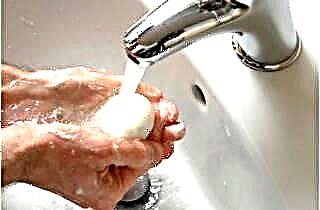 Increasing the body's resistance - hardening, an active lifestyle (mobility, sports, frequent walks), good nutrition, healthy sleep, a positive perception of the surrounding reality.
Increasing the body's resistance - hardening, an active lifestyle (mobility, sports, frequent walks), good nutrition, healthy sleep, a positive perception of the surrounding reality.- Drink plenty of fluids and occasionally moisturize the nasal mucosa.
- Prevention of infection - avoiding contact with sick people, frequent visits to public places (with a large crowd of people) during the peak of infection.
- The use of an individual barrier mask for frequent communication with people during an epidemic.
- Strengthened adherence to the rules of personal hygiene (washing hands with soap, after coming from the street, changing into home clothes).
- Frequent ventilation of office and residential premises, regular wet cleaning and preventive quartzing, if necessary.
The above recommendations will not in all cases help protect the body from the ingress of pathogens, but their use significantly reduces the risk of SARS. These simple rules will help to strengthen the body and give vigor.

 Dry unproductive - occurs 4-5 days after infection. Its transition to a wet form indicates an improvement in the patient's condition.
Dry unproductive - occurs 4-5 days after infection. Its transition to a wet form indicates an improvement in the patient's condition. Increasing the body's resistance - hardening, an active lifestyle (mobility, sports, frequent walks), good nutrition, healthy sleep, a positive perception of the surrounding reality.
Increasing the body's resistance - hardening, an active lifestyle (mobility, sports, frequent walks), good nutrition, healthy sleep, a positive perception of the surrounding reality.